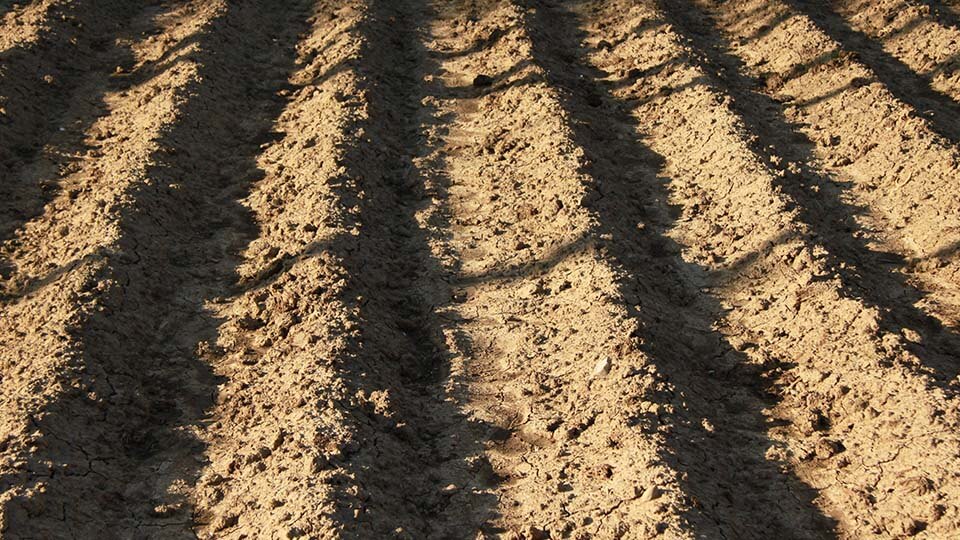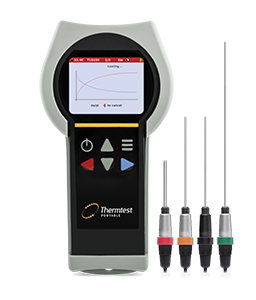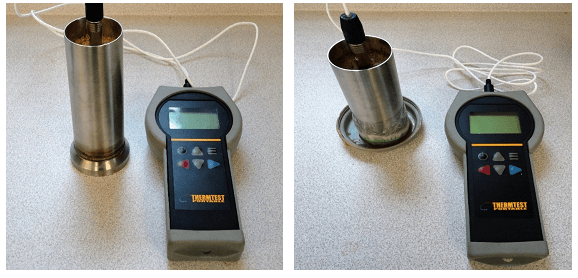
Soil thermal conductivity is extremely important to environmentally sensitive applications in agricultural and constructional fields. As a general rule, the thermal conductivity of soil increases with increasing moisture content. In the construction industry, buried cables and pipelines pose as possible threats. When construction companies are building underground systems, they must pay close attention to the moisture levels and thermal conductive properties of the surrounding soil. If a low soil thermal conductivity is noted, cables and pipelines may experience overheating and may potentially combust. When dealing with buried hot-water pipes, a surrounding soil of low thermal conductivity is required, to minimize heat loss from the pipes to the ground. Therefore, accurate and proper thermal testing, and ultimately the proper selection of backfilling materials is key for the lasting use of underground systems.
The creators of the Thermtest TLS-100 Portable Thermal Resistivity Meter (Figure 1) aimed to provide a convenient, easy to use thermal conductivity meter for measuring the thermal properties of soils and other natural materials in the field. Because of extensive research and modeling, the TLS-100 is capable of testing soils and other soft materials with an excellent accuracy of 5% and reproducibility of 2%, in accordance with ASTM D5334 – Standard Test Method for Determination of Thermal Conductivity Thermal Resistivity of Soil and Soft Rock by Thermal Needle Probe Procedure. The TLS-100 is also designed to account for isothermal drift in a sample prior to the measurement. The temperature of the sample is monitored prior to each test and the temperature drift is recorded as part of the measurement, to allow for drift compensation if needed.

Figure 1. Thermtest TLS-100 Portable Thermal Resistivity Meter provides users the ability to measure thermal properties of soils, solids, and powders with thermal conductivities ranging from 0.1 to 5 W/m·K and thermal resistivities ranging from 0.2 to 10 m·K/W, over a temperature range of -40 to 100°C.
Variations in physical properties can have significant effects on the thermal conductivity of soils. As a general rule, thermal conductivity is proportional to moisture content. Thus, the higher the moisture content of the soil, the higher the thermal conductivity, and vice versa. For this experiment, researchers at Thermtest set out to investigate the thermal conductivity-moisture relationship of soil.
Two soil samples of two moisture level extremes (0% and 100%) were assessed for their thermal properties. To begin, a soil sample was collected from outside of the Thermtest lab and left to dry naturally for three weeks under ambient conditions. To successfully mimic a known New Brunswick soil density (Tarnawski, et al. (2015)), an impact compaction method was used to compact the soil in the sample holder in two separate layers. For the 0% saturated soil sample, the TLS-100 probe was then carefully inserted into the center of the dry sample. Prior to performing any measurements, the probe/sample set-up was allowed to become isothermally stable for 10 minutes.
For the 100% saturated soil sample, the exact procedure was performed as mentioned above, only the soil was compacted into a bottomless sample holder affixed with cheesecloth. This new sample holder was then set into a larger dish containing water and the sample holder was left for 12 hours to allow the soil sample to achieve 100% saturation, through a type of capillary action. Prior to inserting the probe, the sample holder was removed from the larger dish and placed on a dry saucer. The TLS-100 probe was then inserted into the center of the sample and a 10-minute wait period was implemented once again.

Figure 2. The TLS-100 Portable Thermal Conductivity / Resistivity Meter measuring the thermal properties of a 0% saturated soil sample (left) and a 100% saturated soil sample (right).
Due to the transient nature of this method, testing times are relatively low (~2 minutes), an important feature when testing materials with high moisture contents. During the test, the inserted TLS-100 probe produces heat over a set time period. During this period, multiple temperature readings are recorded at regular intervals. As cooling occurs, the temperature readings are repeated at regular intervals once again. The soil thermal conductivity is then calculated based on the temperature recordings using the following equation:
k = q / 4πa
k = thermal conductivity
q = heating power of the needle
a = slope of temperature rise over the log of time
Table 1.
Thermal properties of two soil samples: 0% saturation and a 100% saturation, at room temperature.
The results received follow the soil thermal conductivity/moisture trend mentioned previously. A low thermal conductivity reading (0.364 W/m·K) was achieved with a 0% moisture content, while the soil sample at 100% saturation, displayed a higher thermal conductivity (1.59 W/m·K). These results were also well within the stated reproducibility of the TLS-100. While the thermal conductivity results received in this experiment vary slightly from the results obtained by Tarnawski, et al. (2015), they maintain a similar trend. The soil sample used in the research conducted by Tarnawski, et al. (2015) was collected from a different area of New Brunswick, which therefore could lead to the variations in thermal conductivity readings received by Thermtest scientists.
By testing the thermal conductivity of soil at 0% and 100% saturation, with the TLS-100 Portable Thermal Conductivity Meter, it was proven that the thermal conductivity of soil greatly depends on physical properties, such as water content. Further thermal conductivity testing using the TLS-100 Portable Thermal Resistivity Meter should be performed on soil, taking into consideration other physical properties such as porosity, organic content, and temperature.
For more information regarding the TLS-100, or any applications, please visit Thermtest Portable, or contact us directly.
Thermtest’s TLS-100 presents field researchers the opportunity to measure the thermal properties of organic materials, such as soils and concrete. This instrument relies on the Transient Line Source (TLS) technique to provide efficient and accurate thermal conductivity readings of soils, powders and solids, ranging in thermal conductivities of 0.1 to 5 W/mK.
References:
ASTM D5334-22, Standard Test Method for Determination of Thermal Conductivity of Soil and Soft Rock by Thermal Needle Probe Procedure, ASTM International, West Conshohocken, PA, 2014, www.astm.org.
V. R. Tarnawski, T. Momose, M. L. McCombie, and W. H. Leong. 2015. Canadian Field Soils III. Thermal-Conductivity Data and Modeling. International Journal of Thermophysics, 36(1): 119-156.